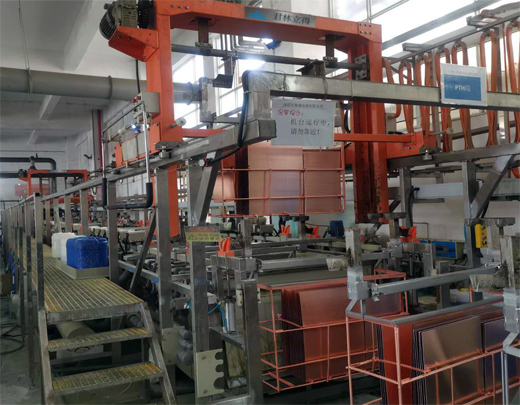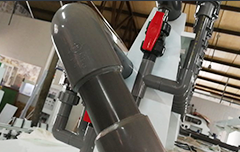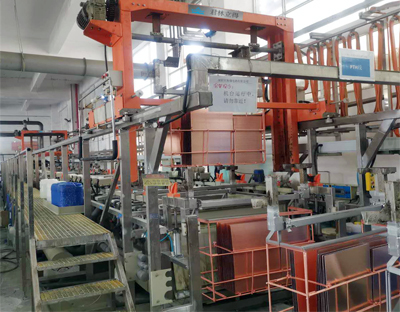1. Alkaline cleaning:
Remove oil stains, fingerprints, oxides, and dust in the hole; adjust the hole wall from negative charge to positive charge to facilitate the adsorption of colloidal palladium in the subsequent process; cleaning after degreasing must be carried out in strict accordance with the requirements of the guidelines, with a copper sinking backlight test Perform testing.
2. Mircoetching:
Remove the oxides on the board surface and roughen the board surface to ensure a good bonding force between the subsequent copper immersion layer and the bottom copper of the substrate; The new copper surface has strong activity and can adsorb colloidal palladium well;
3. Pre-dip:
The main purpose is to protect the palladium tank from the contamination of the pretreatment tank solution and prolong the service life of the palladium tank. The main components are the same as the palladium tank except for palladium chloride, which can effectively wet the pore wall and facilitate the subsequent activation solution to enter the hole in time. Sufficiently effective activation;
4. Activating:
After the polarity of the alkaline degreasing is adjusted by the pretreatment, the positively charged pore walls can effectively adsorb enough negatively charged colloidal palladium particles to ensure the uniformity, continuity and compactness of the subsequent copper precipitation; therefore, the degreasing and Activation is critical to the quality of subsequent copper deposits. Control points: the prescribed time; standard stannous ion and chloride ion concentration; specific gravity, acidity and temperature are also very important, and must be strictly controlled in accordance with the operating instructions.
5. Desmearing:
Remove the stannous ions outside the colloidal palladium particles to expose the palladium nuclei in the colloidal particles to directly and effectively catalyze the electroless copper precipitation reaction. Experience has shown that fluoroboric acid is a better choice as a debonding agent.
6. PTH:
The activation of the palladium nucleus induces an autocatalytic reaction of electroless copper deposition, and both the new chemical copper and the by-product hydrogen of the reaction can be used as reaction catalysts to catalyze the reaction, so that the copper deposition reaction continues. After processing through this step, a layer of chemical copper can be deposited on the board surface or the hole wall. During the process, the bath liquid should be kept under normal air agitation to convert more soluble divalent copper.
The quality of the copper sinking process is directly related to the quality of the production circuit board. It is the main source process of impermissible vias and poor open and short circuits. It is inconvenient for visual inspection. The subsequent processes can only be screened probabilistically through destructive experiments. Effective analysis and monitoring of a single PCB board, so once a problem occurs, it must be a batch problem, even if the test cannot be completed, the final product causes a great quality hazard and can only be scrapped in batches, so strictly follow the parameters of the operation guide. .








 Dec. 18, 2019
Dec. 18, 2019 



